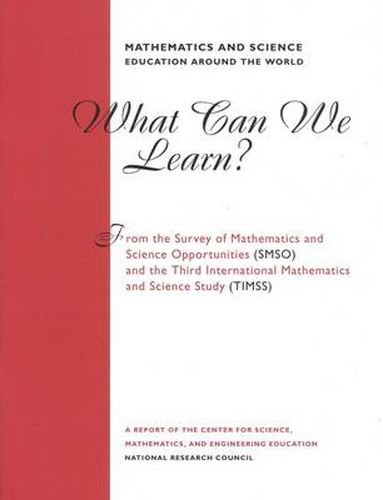Readings Newsletter
Become a Readings Member to make your shopping experience even easier.
Sign in or sign up for free!
You’re not far away from qualifying for FREE standard shipping within Australia
You’ve qualified for FREE standard shipping within Australia
The cart is loading…






Amid current efforts to improve mathematics and science education in the United States, people often ask how these subjects are organized and taught in other countries. They hear repeatedly that other countries produce higher student achievement. Teachers and parents wonder about the answers to questions like these: Why do the children in Asian cultures seem to be so good at science and mathematics? How are biology and physics taught in the French curriculum? What are textbooks like elsewhere, and how much latitude do teachers have in the way they follow the texts? Do all students receive the same education, or are they grouped by ability or perceived educational promise? If students are grouped, how early is this done? What are tests like, and what are the consequences for students? Are other countries engaged in Standards-like reforms? Does anything like standards play a role in other countries? Questions such as these reflect more than a casual interest in other countries’ educational practices. They grow out of an interest in identifying ways to improve mathematics and science education in the United States. The focus of this short report is on what the Third International Mathematics and Science Study (TIMSS), a major international investigation of curriculum, instruction, and learning in mathematics and science, will be able to contribute to understandings of mathematics and science education around the world as well as to current efforts to improve student learning, particularly in the United States.
$9.00 standard shipping within Australia
FREE standard shipping within Australia for orders over $100.00
Express & International shipping calculated at checkout
Amid current efforts to improve mathematics and science education in the United States, people often ask how these subjects are organized and taught in other countries. They hear repeatedly that other countries produce higher student achievement. Teachers and parents wonder about the answers to questions like these: Why do the children in Asian cultures seem to be so good at science and mathematics? How are biology and physics taught in the French curriculum? What are textbooks like elsewhere, and how much latitude do teachers have in the way they follow the texts? Do all students receive the same education, or are they grouped by ability or perceived educational promise? If students are grouped, how early is this done? What are tests like, and what are the consequences for students? Are other countries engaged in Standards-like reforms? Does anything like standards play a role in other countries? Questions such as these reflect more than a casual interest in other countries’ educational practices. They grow out of an interest in identifying ways to improve mathematics and science education in the United States. The focus of this short report is on what the Third International Mathematics and Science Study (TIMSS), a major international investigation of curriculum, instruction, and learning in mathematics and science, will be able to contribute to understandings of mathematics and science education around the world as well as to current efforts to improve student learning, particularly in the United States.